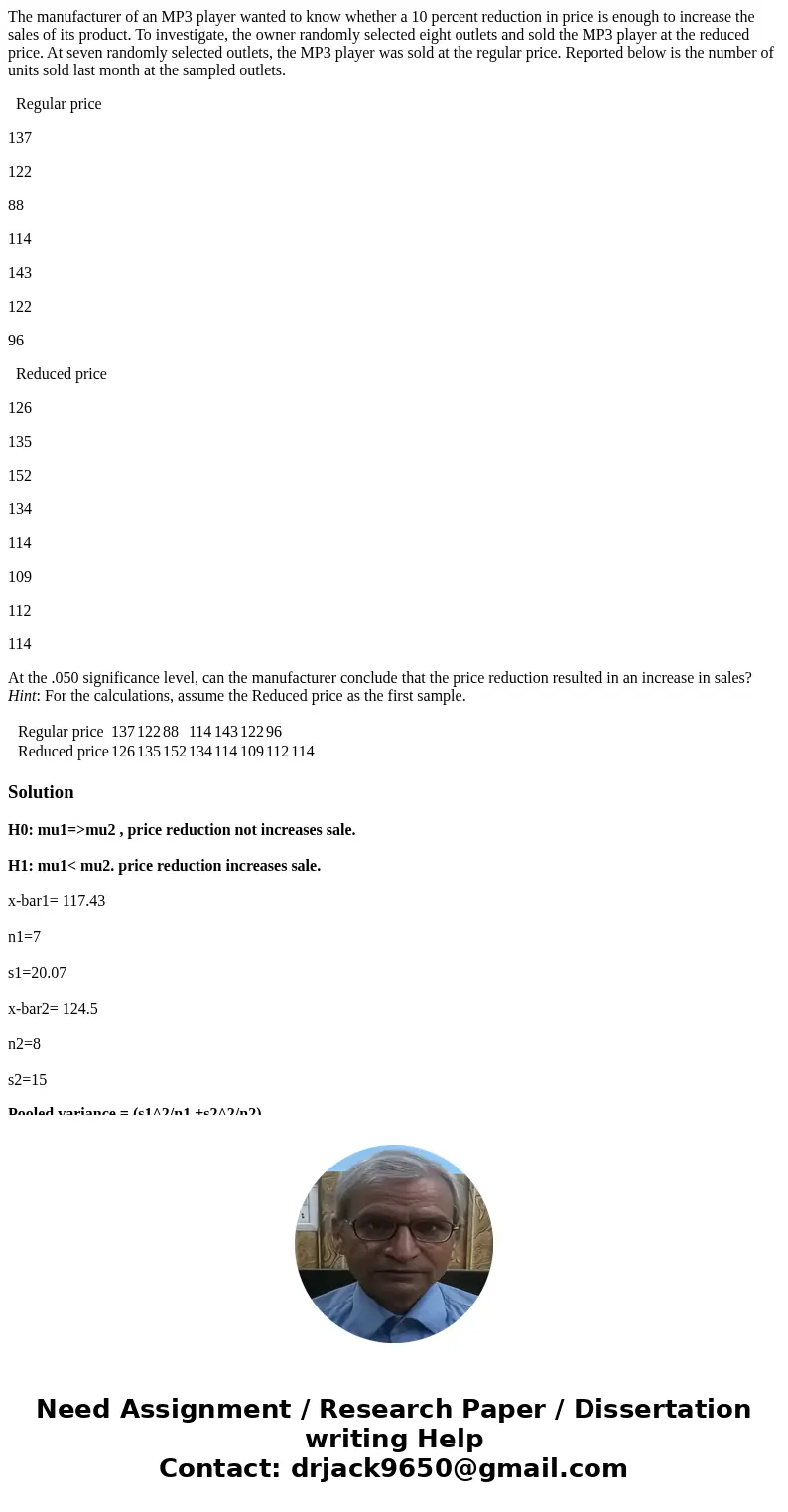The manufacturer of an MP3 player wanted to know whether a 1
The manufacturer of an MP3 player wanted to know whether a 10 percent reduction in price is enough to increase the sales of its product. To investigate, the owner randomly selected eight outlets and sold the MP3 player at the reduced price. At seven randomly selected outlets, the MP3 player was sold at the regular price. Reported below is the number of units sold last month at the sampled outlets.
Regular price
137
122
88
114
143
122
96
Reduced price
126
135
152
134
114
109
112
114
At the .050 significance level, can the manufacturer conclude that the price reduction resulted in an increase in sales? Hint: For the calculations, assume the Reduced price as the first sample.
| Regular price | 137 | 122 | 88 | 114 | 143 | 122 | 96 | |
| Reduced price | 126 | 135 | 152 | 134 | 114 | 109 | 112 | 114 |
Solution
H0: mu1=>mu2 , price reduction not increases sale.
H1: mu1< mu2. price reduction increases sale.
x-bar1= 117.43
n1=7
s1=20.07
x-bar2= 124.5
n2=8
s2=15
Pooled variance = (s1^2/n1 +s2^2/n2)
= ((20.07)^2/7 + (15)^2/8)
= 85.67 Answer
Test static = (x-bar1- x-bar2)/sqrt(s1^2/n1 +s2^2/n2)
= (117.43 -124.5 )/sqrt(85.67)
= - 0.76 Answer
Claim: µ1< µ2
Test Statistic , t = -0.76
DF = 8+7 -2 = 13
P-Value: 0.23
Fail to Reject the Null Hypothesis
Sample does not provide enough evidence to support the claim
Conclusion: price reduction not increases sale.


 Homework Sourse
Homework Sourse